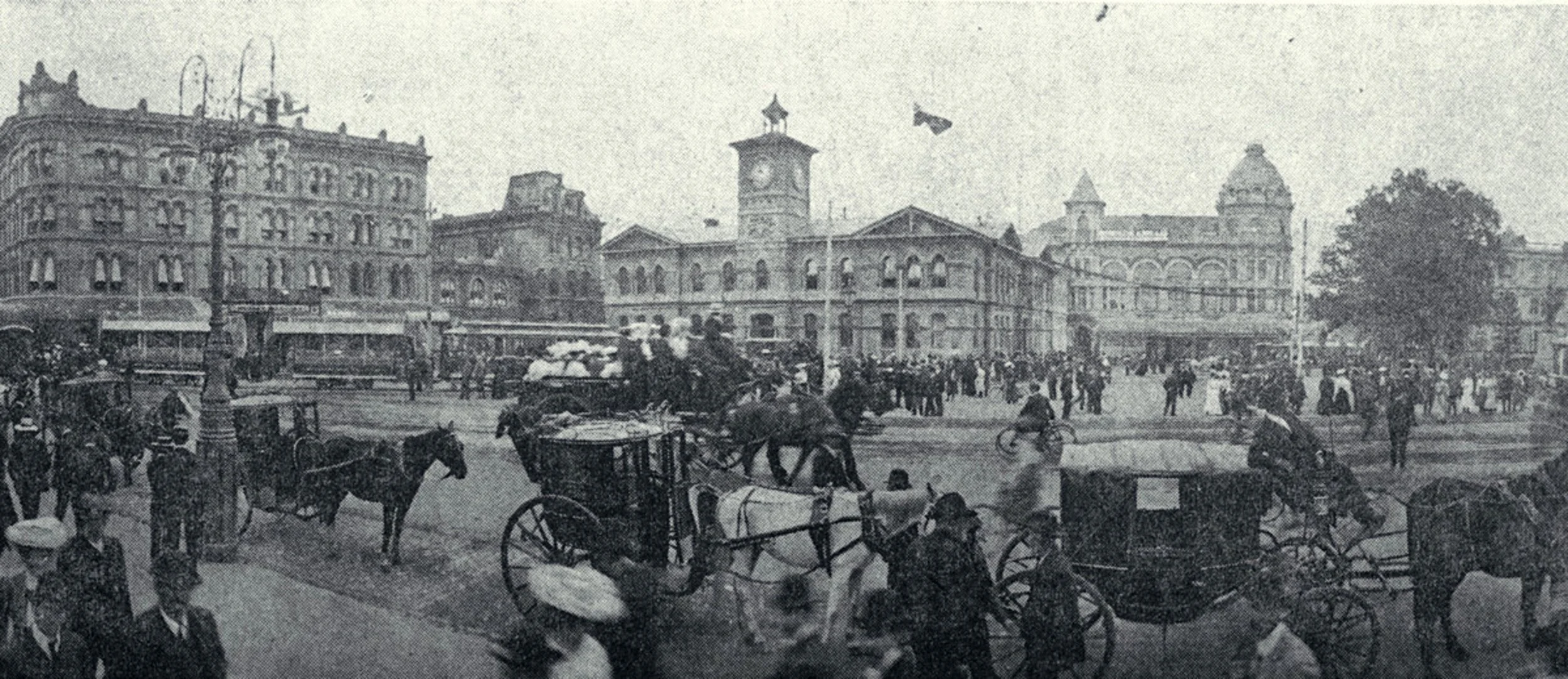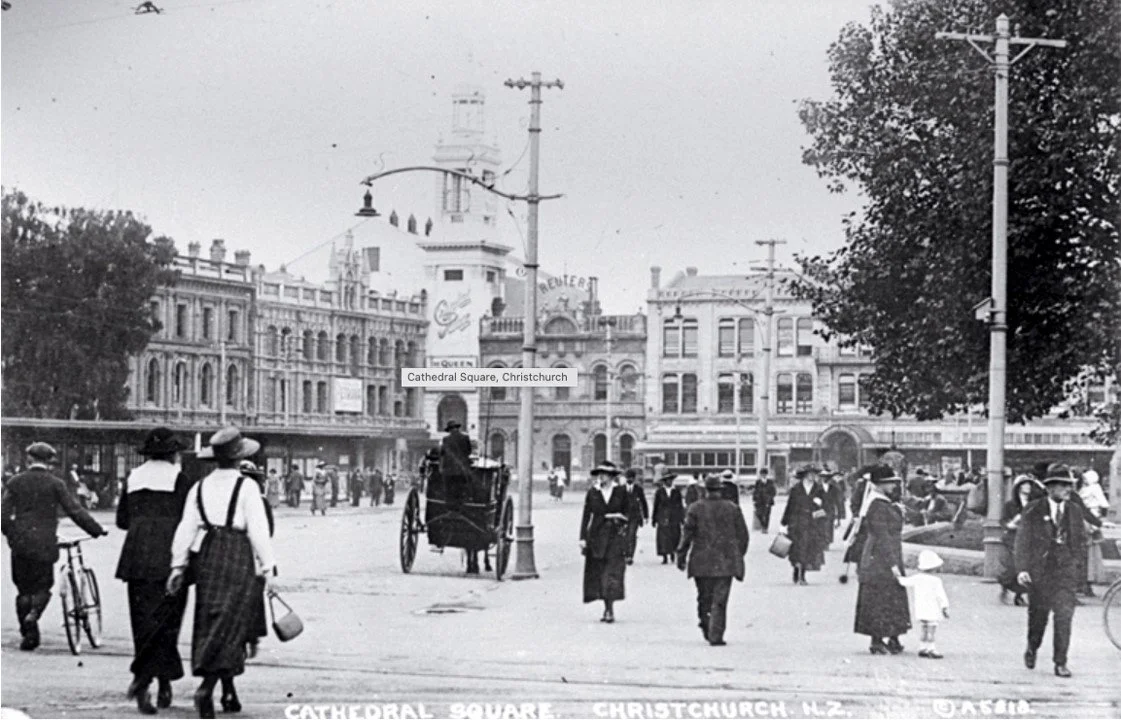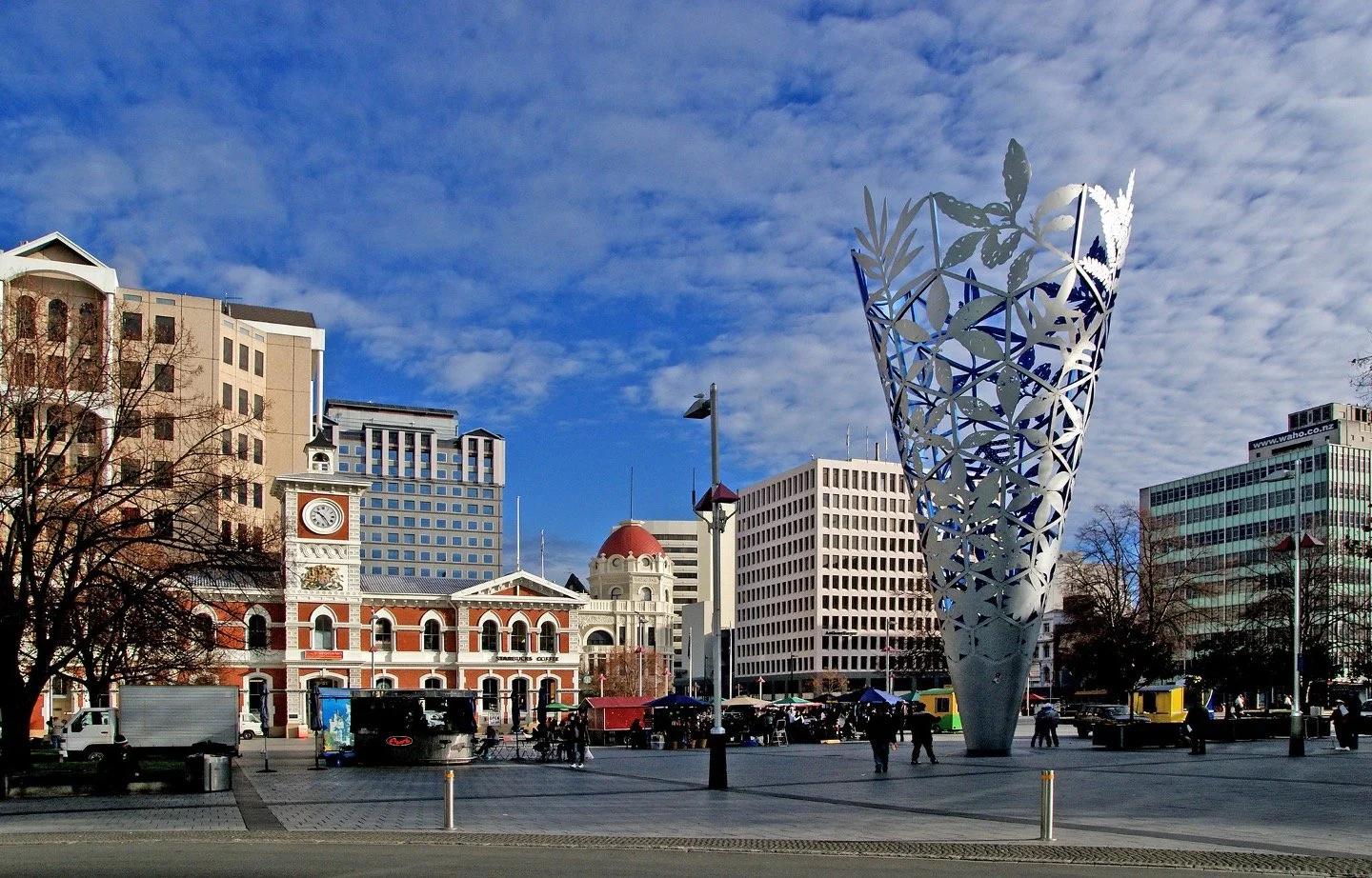White-reia Cathedral Square: Respecting the Past, Planning for the Future
Cathedral Square, 1867. Source: Alexander Turnbull Library, ID 1-1-007309-G.
At the heart of the Christchurch city centre lies one of Aotearoa’s most symbolically and historically rich public spaces, Whiti-reia Cathedral Square. In 2021, Christchurch City Council commissioned WSP to develop a Conservation Management Plan (CMP) for the Square. For council staff, planners, designers and heritage professionals, this CMP offers clear and considered guidance to support thoughtful, place-based decision-making in one of New Zealand’s most significant civic spaces.
Tangata Whenua Connections
The name Whiti-reia was gifted by mana whenua, connecting the Square with Paikea, a renowned ancestor of Ngāi Tahu. According to oral tradition, Paikea arrived in Aotearoa on the back of a whale. Whiti-reia was the name of his house. That name now anchors Cathedral Square in a whakapapa that acknowledges the enduring relationship between people and place.
Layers of Significance
As urban planners and city designers, we often talk about the importance of central gathering spaces. Cathedral Square offers a rare and powerful example of a civic space that holds deep meaning across generations.
The Square has long-functioned as the physical and symbolic centre of Christchurch. From its early role in the Canterbury Association’s 19th-century city plan, to its place today amidst major civic and cultural institutions like Tūranga and Te Pae. The Square is framed by both historic and modern buildings, trees, sculptures, plaques, and open space. These diverse layers tell a complex and evolving story of Christchurch through architecture, design, and everyday public life.
Why This Conservation Management Plan Matters
While Cathedral Square is widely recognised for its heritage value, its ongoing care requires more than good intentions. The Conservation Management Plan brings clarity and cohesion to that process. It outlines why the Square is significant, how it should be managed, and what actions are needed to protect it into the future.
For those involved in public space design, landscape architecture, and urban planning, this CMP functions as a practical tool for navigating change … whether that's new development, infrastructure repair, or the programming of events and activity.
It also highlights risks that need addressing, including earthquake damage, material deterioration, pest issues, poor drainage, and the erosion of important viewshafts due to insensitive development. With well-informed policy and guidance now in place, there's a strong foundation for responding proactively to these challenges.
A Place to Respect, Restore and Reimagine
Whiti-reia Cathedral Square has always been a place for people … for gathering, celebration, protest, remembrance and reflection. It continues to hold a strong sense of identity for many Cantabrians and carries with it stories that span Māori, colonial and contemporary histories.
For heritage conservation to be successful in a living urban centre, it must go hand-in-hand with inclusive, strategic planning. This CMP supports that goal, helping us manage change with care, and to embed heritage values within the decisions we make at every scale.
In a city that’s rebuilding its identity, Cathedral Square offers something rare … a place where past, present, and future converge in public space. With strategic and culturally responsive frameworks in place, we can ensure it remains a vibrant and meaningful part of the Christchurch city centre for generations to come.
Cathedral Square, 1900s. Source: https://discoverywall.nz/album/3046/22941.
Cathedral Square, 1920s. Source: Christchurch City Libraries-PhotoCD02-IMG0001.
Cathedral Square, pre-1954. Source: K.E. Niven and Co of Wellington.
Cathedral Square, 1965. Source: Christchurch City Libraries-PH13-166.
Cathedral Square 1990s. Christchurch City Council Libraries Photo Hunt, CC-BY-NC-SA 3.0 NZ.
Cathedral Square, 2000s. Source: Bernard Spragg, Flickr 2008, CC0 1.0.
Keen to know more … explore these projects!







